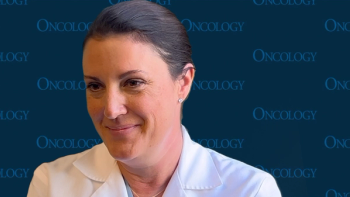
Fonseca Discuses Real-World Use of Daratumumab Across Lines of Therapy for Transplant-Ineligible Myeloma
CancerNetwork® spoke with Rafael Fonseca, MD, about real-world use of daratumumab-containing regimens as either frontline or second-line therapy for transplant-ineligible multiple myeloma.
At the
Transcript:
In the United States, both the use of RVd [lenalidomide, bortezomib, and dexamethasone] as well as the MAIA trial [NCT02252172] regimen [daratumumab (Darzalex) plus lenalidomide and dexamethasone (D-Rd)] are accepted as standard of care. What I have perceived is that within the academic centers, more and more people are using the MAIA regimen. Part of this relates to the fact that the data for superiority are there, as well as a perceived superiority. That’s why we’re doing this modeling.
However, when one looks at the community practices, RVd still has a very strong hold on those prescribing patterns. This is probably related to the familiarity that our colleagues in the community have with a regimen like RVd, which has been used extensively. But over time, we’ve seen more and more patients being treated with a MAIA-type combination.
Reference
Fonesca R, Facon T, Hashim M, et al. First-Line Use of Daratumumab, Lenalidomide, and Dexamethasone Confers Survival Benefit Compared with Second-Line Use of Daratumumab-Based Regimens in Transplant-Ineligible Patients with Multiple Myeloma: Analysis of Different Clinical Scenarios. Presented at the 2021 American Society of Hematology Annual Congress. December 11-14, 2021. Virtual. Abstract 118. https://bit.ly/3pLLttF
Newsletter
Stay up to date on recent advances in the multidisciplinary approach to cancer.






















































































